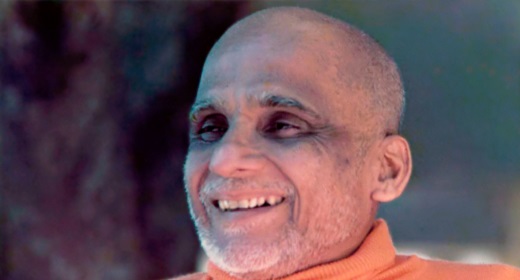Accepting our physical sensations—whether pleasant or not—is one of the most challenging and liberating of practices.
 by Tara Brach: We experience our lives through our bodies, whether we are aware of it or not. Yet we are usually so mesmerized by our ideas about the world that we miss out on much of our direct sensory experience. Even when we are aware of feeling a strong breeze, the sound of rain on the roof, a fragrance in the air, we rarely remain with the experience long enough to inhabit it fully. In most moments, an overlay of inner dialogue comments on what is happening and plans what we might do next. We might greet a friend with a hug, but our moments of physical contact become blurred by our computations about how long to embrace or what we’re going to say when we’re done. We rush through the hug, not fully present.
by Tara Brach: We experience our lives through our bodies, whether we are aware of it or not. Yet we are usually so mesmerized by our ideas about the world that we miss out on much of our direct sensory experience. Even when we are aware of feeling a strong breeze, the sound of rain on the roof, a fragrance in the air, we rarely remain with the experience long enough to inhabit it fully. In most moments, an overlay of inner dialogue comments on what is happening and plans what we might do next. We might greet a friend with a hug, but our moments of physical contact become blurred by our computations about how long to embrace or what we’re going to say when we’re done. We rush through the hug, not fully present.
Many people are so accustomed to being out of touch with the body that they live entirely in a mental world. The fact that the body and mind are interconnected might even be hard for them to believe. Unless feelings are painfully intrusive or, as with sex, extremely pleasant or intense, physical sensations can seem elusive and be difficult to recognize. Often we are in a trance—only partially present to our experience of the moment.
Over the Waterfall
The buddha called our persistent emotional and mental reactivity “the waterfall,” because we are so easily carried away from the experience of the present moment by its compelling force. Both Buddhist and Western psychologies tell us how this happens: The mind instantly and unconsciously assesses whatever we experience as pleasant, unpleasant, or neutral. When pleasant sensations arise, our reflex is to grasp after them and try to hold on to them. We often do this through planning, and with the emotional energies of excitement and yearning. When we experience unpleasant sensations, we contract, trying to avoid them. Again, the process is the same–we worry and strategize; we feel fear, irritation. Neutral is our signal to disengage and turn our attention elsewhere, which usually means to an experience that is more intense or stimulating.
All of these reactions—to people, to situations, to thoughts in our minds—are actually reactions to the kinds of sensations that are arising in the body. When we become riveted on someone’s ineptness and are bursting with impatience, we are reacting to our own unpleasant sensations; when we are attracted to someone and filled with longing and fantasy, we are reacting to pleasant sensations. Our entire swirl of reactive thoughts, emotions, and behaviors springs from this ground of sensations. When these sensations are unrecognized, our lives are lost in the waterfall of reactivity—we disconnect from living presence, from full awareness, from our hearts.
In order to awaken from this trance, the Buddha recommended “mindfulness centered on the body.” In fact, he called physical sensations the first foundation of mindfulness, because they are intrinsic to feelings and thoughts and are the base of the very process of consciousness. Because our pleasant or unpleasant sensations so quickly trigger a chain reaction of emotions and mental stories, a central part of our training is to recognize the arising of thoughts and return over and over to our immediate sensory experience. We might feel discomfort in the lower back and hear a worried inner voice saying, “How long will this last? How can I make it go away?” Or we might feel a pleasant tingling, a relaxed openness in the chest, and eagerly wonder, “What did I do to arrive in this state? I hope I can do that again.”
The basic meditation instructions given by the Buddha were to be mindful of the changing stream of sensations without trying to hold on to them, change them, or resist them. The Buddha made it clear that being mindful of sensations does not mean standing apart and observing like a distant witness. Rather, we directly experience what is happening in our bodies. For instance, instead of seeing our hands as external objects, we carefully feel into the energy that is our hands at any particular moment.
Instead of directly experiencing sensations, we might have the notion that there is “pain in my back.” Maybe we have a mental map of the body and a certain area we call “back.” But what is “back”? What happens when we let go of our picture and directly enter into that part of the body with awareness? What happens to pain when we don’t label it as such?
Radical Impermanence
With mindful attention, we can investigate and discover what our moment-to-moment experience of pain actually is. Perhaps we feel pressure and an ache that seems localized in a small area. As we pay deeper attention, we might notice heat or tightness. Perhaps the sensations are no longer pinpointed in one place but begin to spread and loosen. As we continue to pay attention, we might become aware of flowing sensations arising, becoming distinctive, blending into one another, vanishing, appearing elsewhere.
Seeing this fluidity in our experience is one of the most profound and distinctive realizations that arise when we become mindful of sensations. We recognize that there is absolutely nothing solid or static about our experience. Rather, the realm of sensations is endlessly changing–sensations appear and vanish, shifting in intensity, texture, location. As we pay close attention to our physical experience, we see that it does not hold still for even a moment.
Each time we let go of our story, we realize there is no ground to stand on, no position that orients us, no way to hide or avoid what is arising. One student at a meditation retreat told me, “When I am mindful of sensations for more than just a few seconds, I start getting anxious. I feel like I should be watching out, looking over my shoulder. It feels like there are important things I am overlooking and ought to be thinking about.” It’s easy to feel that something bad will happen if we do not maintain our habitual vigilance by thinking, judging, planning. Yet this is the very habit that keeps us trapped in resisting life. Only when we realize we can’t hold on to anything can we relax our efforts to control our experience.
Sensations are always changing and moving. If we habitually interrupt and constrict their natural process of transformation by resisting them or trying to hold on to them, by tightening against them in our body or telling ourselves stories, it’s like damming up or diverting the course of a river. It’s easy to let the river flow when sensations are pleasant. But when they’re not, when we are in emotional or physical pain, we tend to contract and pull away. Seeing this and learning how to meet pain with radical acceptance is one of the most challenging and liberating of practices.
Mindful Body Scan
To invite this kind of acceptance and embodied presence into your life, you can try practicing a mindful body scan. Start this exercise by sitting comfortably, closing your eyes, and taking several long, deep breaths. Then rest in the natural flow of your breath and allow your body and mind to begin to settle.
Place your attention at the top of your head and without looking for anything in particular, feel the sensations there. Then, letting your attention move down, feel the sensations on the back of your head, on either side of your head, in your ears, your forehead, eyes, nose, cheeks, mouth, and jaw. Be as slow and thorough as you like.
As you continue the scan, be careful not to use your eyes to direct your attention. This will only create tension. Rather, connect directly with sensations by feeling the body from within the body. In certain parts of the body, it is common to feel numbness or for there to be no noticeable sensations. Let your attention remain in those areas for a few moments in a relaxed and easy way. You may find that as your attention deepens, you become increasingly aware of sensations. Images or thoughts will naturally arise. Notice them passing through and gently return your attention to the sensations. Let your intention be to release all ideas and experience your physical aliveness exactly as it is.
With a relaxed, open awareness, begin a gradual and thorough scan of the rest of your body. Place your attention on the area of your neck and throat, noticing without judgment whatever sensations you feel. Then let your attention move to your shoulders and slowly down your arms, feeling the sensations and aliveness there, and to your hands. Feel each finger from the inside, the palms, the backs of the hands—noticing tingling, pulsing, pressure, warmth, or cold.
Slowly move on to explore the sensations in your chest, then allow your awareness to move into your upper back and shoulder blades, then down into the middle and lower back and the abdomen. Continuing to let awareness sweep down the body, feel the sensations that arise in the hips, buttocks, genitals. Move slowly down through the legs, feeling them from within, then through the feet and toes. Feel the sensations of contact, pressure, and temperature in the places where your body touches the chair, cushion, or floor.
Now expand your attention to include your entire body in a comprehensive way. Be aware of the body as a field of changing sensations. Can you sense the subtle energy field that gives life to every cell, every organ in your body? Is there anything in your experience that is solid, unmoving? Is there any center or boundary to the field of sensation? Is there any solid self you can locate that possesses these sensations? What or who is aware of the experience?
As you rest in awareness of your whole body, if particular sensations call your attention, bring a soft and allowing attention to them. Don’t try to manage or manipulate your experience; don’t grasp or push anything away. Simply open to the dance of sensations, feeling your life from the inside out.
After you’ve spent some time feeling these sensations, open your eyes and return your attention to the outside world. Then, as you move through the various circumstances of your day, continue to notice what kinds of sensations arise in your body. What happens when you feel angry? When you are stressed and racing against time? When you feel criticized or insulted by someone? When you feel excited or happy?
Pay particular attention to the difference between being inside thoughts and reawakening to the immediate experience of sensations. The body scan can be repeated during a single meditation sitting, or throughout your daily life, to help you return to the experience of your body and rest in the awareness of your living being.








































